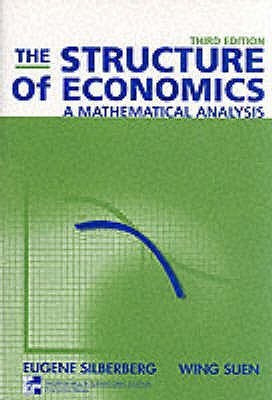The Structure of Economics: A Mathematical Analysis - A Mathematical Analysis 3rd Edition(English, Paperback, Silberberg Eugene)
Quick Overview
Product Price Comparison
This text combines mathematical economics with microeconomic theory and can be required or recommended as part of a course in graduate microeconomic theory, advanced undergraduate or graduate-level mathematical economics, or any advanced topics course. It also has reference value for international, library, professional and reference markets. This revision addresses significant new topics--the theory of contracts and markets with imperfect information--that have recently become prominent in the microeconomics literature. Key Features New author Wing Suen has contributed two new chapters, Contracts and Incentives (15) and Markets with Imperfect Information (16). The economics of information has been at the center stage of microeconomic research in the past two decades. These new chapters bring the fruits of this research to a level approachable by senior undergraduates or incoming graduate students. Too often, research in information economics has stressed generality at the expense of deriving useful results. The two new chapters offer a fresh perspective on these models by emphasizing their observable implications, i.e. their implications that could in principle be tested with actual data. By using only elementary calculus and beginning matrix theory (Cramer's Rule), even the advanced topics in contract and information theory, as well as the traditional topics of consumer and producer theory are made accessible to advanced undergraduates and beginning graduate students. Numerous classroom-tested revisions and clarifications of the existing material have been incorporated into the text. Through careful pruning of older material, the book has maintained its current manageable size. The text maintains the informal tone and its emphasis on intuitive understanding of the mathematical analysis. The authors derive interesting results with only elementary mathematical tools. The text assumes knowledge only of calculus of one variable. The required tools in multivariable calculus are developed in the text in an intuitive and informal manner, in the context of the useful models in economics. The text retains its focus on comparative statics as the core methodology of economic science. This edition continues to explain to students the types of maximization models that are useful, that is, those that are capable of deriving observable, refutable implications from a maximization hypothesis. Unlike texts such as Chiang, which are 'math for economists' texts, The Structure of Economics is an economics text, with the emphasis on how mathematical tools are used by economists to derive useful results. The mathematical requirements for this text are higher than those for Chiang. ┬Ā


